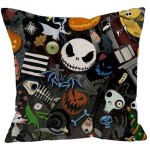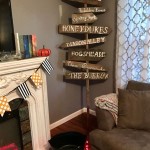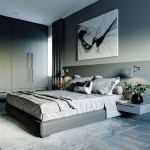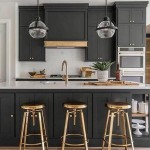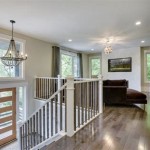Home Decor Photography Ideas
Capturing the essence of a beautifully decorated home requires more than simply pointing a camera and clicking. Home decor photography demands a keen eye for detail, creative composition, and technical know-how. Whether you're a professional photographer or simply a homeowner looking to showcase your space, mastering the art of home decor photography can elevate your images and captivate viewers. This article explores key elements, techniques, and ideas to help you create stunning visuals of your home decor.
1. Natural Light is Your Best Friend
Natural light is the foundation of beautiful home decor photography. It illuminates spaces naturally, adding depth and dimension to your images. Utilize windows as your primary light source, positioning your subject accordingly.
Consider the time of day for optimal lighting:
- Morning Light: Soft, warm light that provides a gentle, even illumination.
- Afternoon Light: Offers dramatic shadows that create a more moody atmosphere.
In situations with limited natural light, utilize strategically placed reflectors to bounce light back onto your subject, reducing harsh shadows and illuminating darker corners.
2. Composition Matters: Rule of Thirds and Leading Lines
Composition is crucial in directing the viewer's eye and creating a visually appealing image. The rule of thirds is a classic guideline that involves dividing your frame into nine equal sections with two horizontal and two vertical lines. Position key elements of your image along these lines or at their intersections to create a more dynamic and balanced composition.
Utilize leading lines to guide the viewer's gaze through the image. These lines can be created using furniture placement, architectural features, or even natural elements like pathways or fences. By leading the eye towards a focal point, you create a sense of depth and narrative within the image.
3. Emphasize Detail and Storytelling
Home decor photography goes beyond showcasing furniture and accessories. It aims to capture the essence of a space and tell a story through visual details. Focus on capturing the unique features and personalities that make the space special.
- Close-Ups: Capture the texture of fabrics, the intricate details of a vase, or the unique design of a throw pillow.
- Lifestyle Shots: Showcase the space in use. Include a cup of coffee on a side table, a book open on a coffee table, or a family gathered in the living room.
- Focus on Textures and Patterns: Capture the interplay of textures, patterns, and colors that make up your home's decor.
4. The Power of Editing
Post-processing is an essential step in enhancing your home decor photos. Use photo editing software to adjust exposure, contrast, and color balance, bringing out the richness and depth of your images.
- Enhance Color: Adjust saturation and vibrancy to make colors pop.
- Correct White Balance: Ensure that colors in the photo are accurate and true to life.
- Cropping and Straightening: Adjust composition, remove distracting elements, and ensure that lines are straight.
- Sharpening: Enhance the details and definition of your image.
5. Explore Unique Perspectives
Think beyond the traditional eye-level shot. Experiment with different perspectives and angles to add visual interest to your photography.
- Low Angles: Add drama and grandeur to a space by shooting from a low vantage point.
- High Angles: Capture a wider perspective and create a more dynamic composition.
- Unusual Angles: Try shooting through a doorway, window, or from behind an object to create a unique and unexpected viewpoint.
- Close-Ups: Emphasize the texture of fabrics, the intricacy of artwork, or the unique details of furniture.
6. The Value of Styling
Styling plays a significant role in enhancing your home decor photos. Before shooting, take the time to arrange furniture, accessories, and décor items to create a cohesive and visually appealing scene.
- Remove Clutter: Clear away unnecessary items to create a clean and organized space.
- Add Touches of Personalization: Incorporate personal items, such as books, plants, or family photos, to create a sense of warmth and personality.
- Pay Attention to Color: Consider the color palette and the flow of colors throughout the space. Use accessories and décor items to introduce pops of color or create a monochromatic look.
- Create Visual Balance: Ensure that furniture and objects are arranged symmetrically or asymmetrically, depending on the desired aesthetic.
7. Equipment Essentials
While high-end cameras can deliver exceptional results, exceptional home decor photography is not solely dependent on expensive equipment. But having the right tools can certainly enhance your workflow and image quality.
- Camera: A DSLR or mirrorless camera offers greater control over settings and image quality.
- Lens: A wide-angle lens is ideal for capturing spacious interiors, while a telephoto lens is useful for close-ups and detail shots.
- Tripod: Provides stability, ensures sharp images, and allows for longer shutter speeds in low-light conditions.
- Remote Shutter Release: Reduces camera shake and allows you to capture images from a distance.
- Reflectors: Bounce light back onto your subject, softening shadows and brightening dark areas.

Fall In Love With Designs Home Decor Ideas Frames Inspirations Updates

75 Creative Ways To Display Your Photos On The Walls Digsdigs

30 Best Photo Wall Ideas And Gallery Layouts

30 Best Photo Wall Ideas And Gallery Layouts

75 Creative Ways To Display Your Photos On The Walls Digsdigs

10 Photography Workspace Decor Ideas Photobug Community

10 Photography Workspace Decor Ideas Photobug Community

30 Best Photo Wall Ideas And Gallery Layouts

Revamp Your Office With These 9 Ideas For Decorating Photography Workspace Junebug Weddings

30 Stylish Bedroom Wall Decor Ideas And Tips
